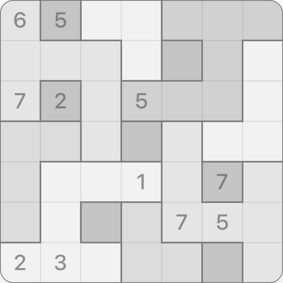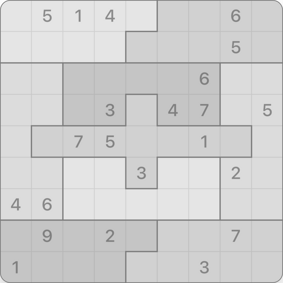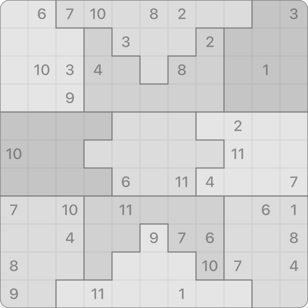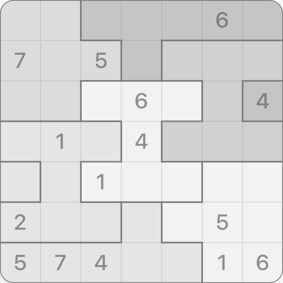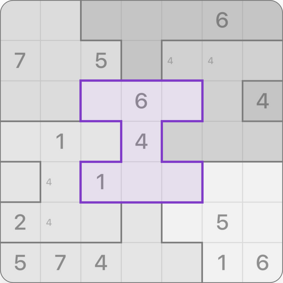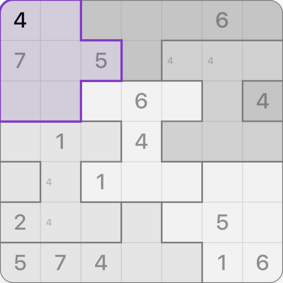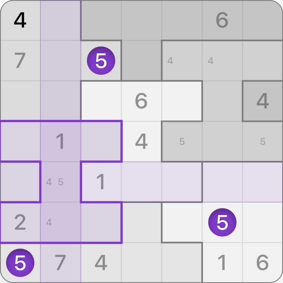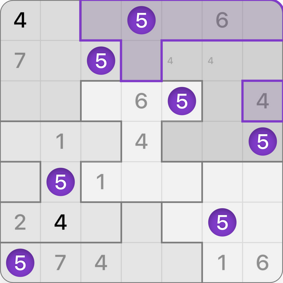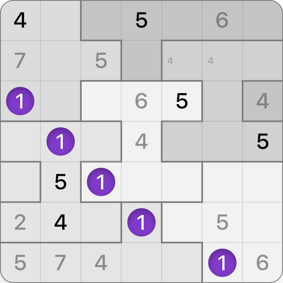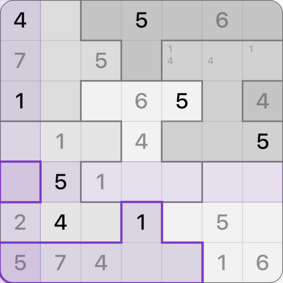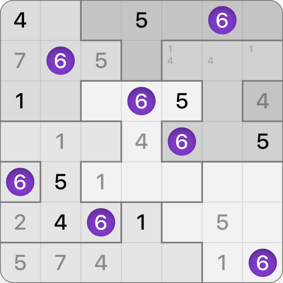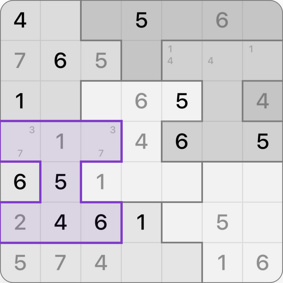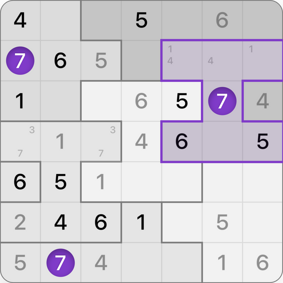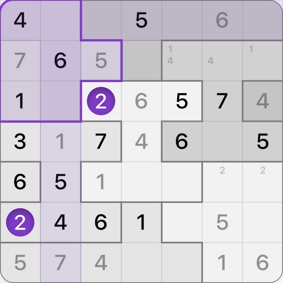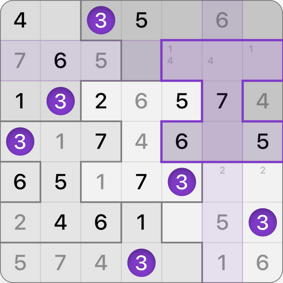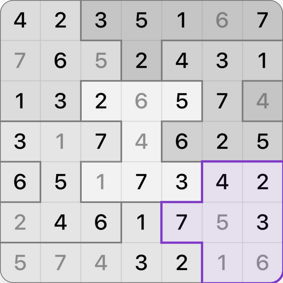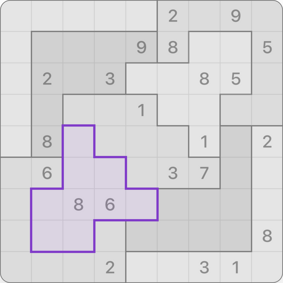

Boxes
The difference to Classic Sudoku can be found in the boxes. For example, while a 9x9 Classic Sudoku always has boxes as a 3x3 grid, in the Jigsaw variant they have a free form.
They are arranged as a pattern in which individual box shapes can be repeated.


Boxes
The difference to Classic Sudoku can be found in the boxes. For example, while a 9x9 Classic Sudoku always has boxes as a 3x3 grid, in the Jigsaw variant they have a free form.
They are arranged as a pattern in which individual box shapes can be repeated.

